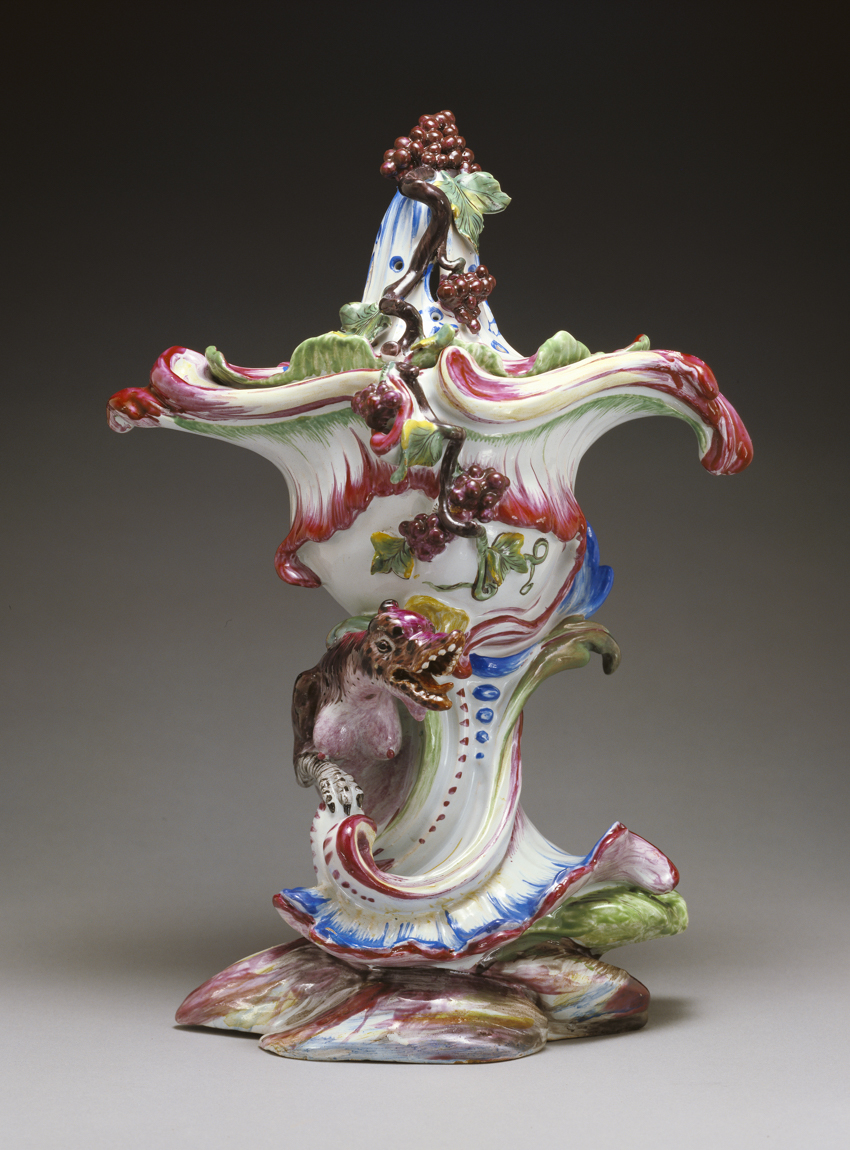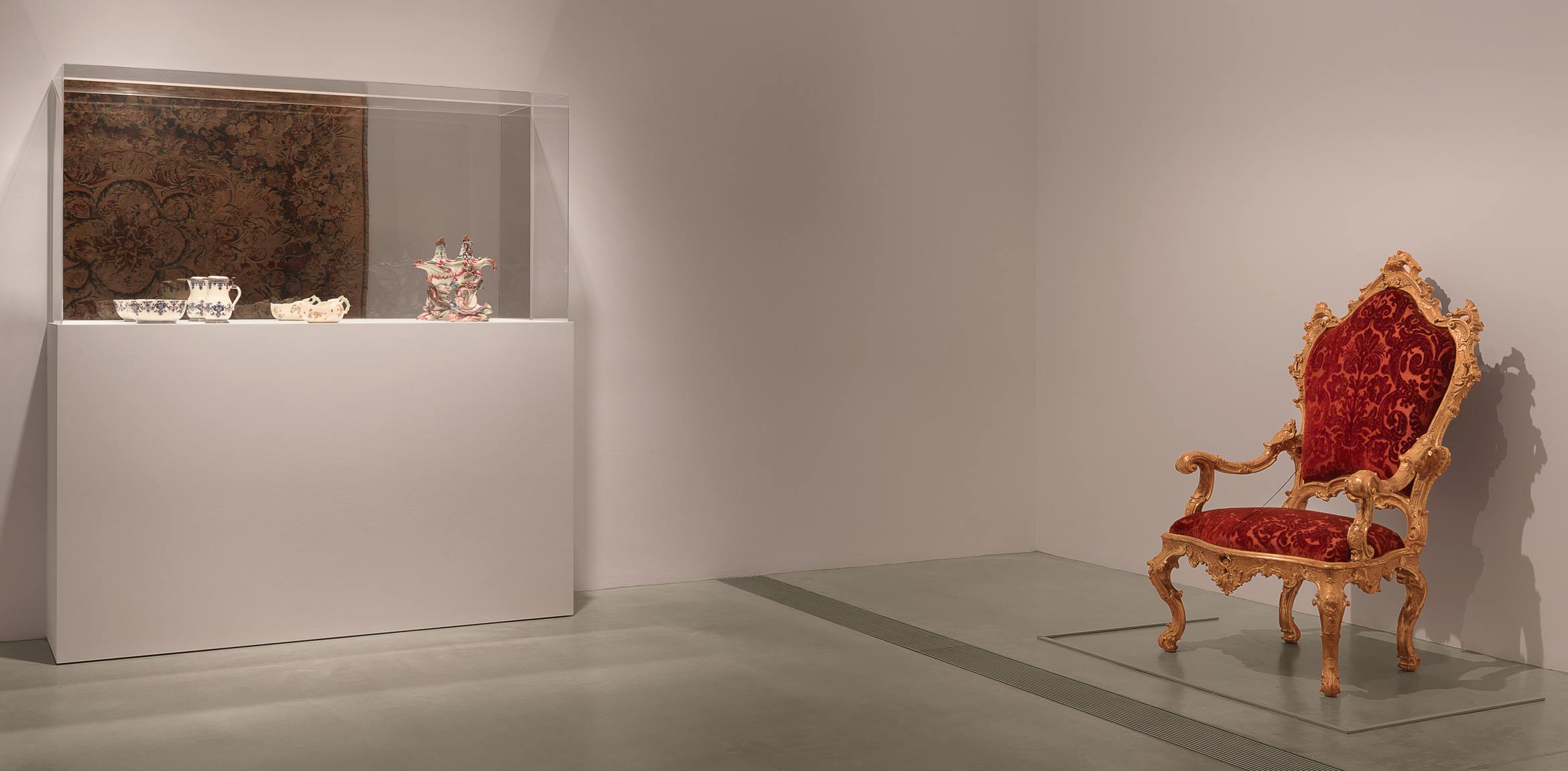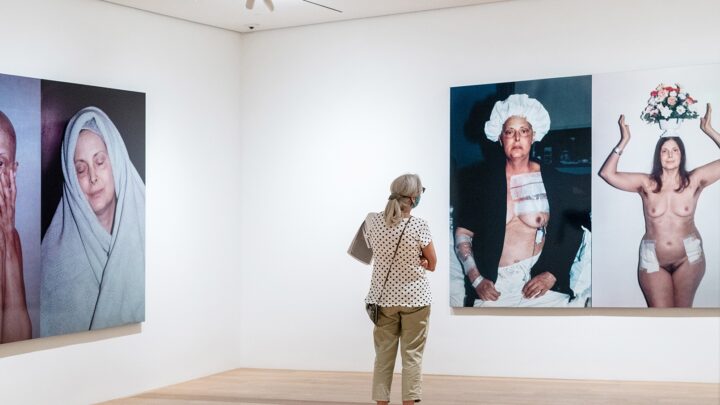A breasted dragon slithers around the body of a vessel teeming with colorful vegetation and clusters of succulent grapes. This object was made at Sceaux, a French earthenware manufactory that produced whimsical containers and figurines as alternatives to expensive East Asian porcelain. The dragon was probably influenced by motifs that the artist saw on objects imported from China. Art produced in eighteenth-century Europe often reveals a fascination with the visual traditions of Asia.
This vessel once held potpourri, a fragrant concoction that could contain spices, dried fruits, dried flowers, and scented liquids. Its top, with perforations allowing the scent to diffuse, lifts off to reveal a small basin in which the aromatic mixture was placed. Many people in eighteenth-century Europe believed that disease originated in poisonous clouds of foul smells emanating from decaying bodies, rotting vegetation, mold, dust, and mildew. To combat against “deadly” odors, people cleansed the air in their homes with potpourri, and artists often devised decorative containers like this one to hold such mixtures. Its vivid and lively decorative scheme would have made it as pleasant to behold as to smell.




